
Mexico City: A Vibrant Mosaic of Culture and History
Explore Mexico City: A bustling metropolis where ancient history, rich culture, and vibrant modern life converge in an unforgettable travel experience.
Mexico City, the sprawling capital of Mexico, is a vibrant blend of ancient history and modern energy. As one of the largest cities in the world, it boasts a rich tapestry of culture, art, and cuisine. From the ruins of Templo Mayor, a testament to the Aztec civilization, to the buzzing streets filled with street food vendors, Mexico City offers a unique experience at every corner. The city's historic center, a UNESCO World Heritage site, is home to grand colonial buildings like the Metropolitan Cathedral and the Palacio de Bellas Artes. Wander through its cobblestone streets, and you'll find yourself immersed in centuries of history. Don't miss the Zócalo, one of the largest public squares in the world, which is a hub of activity and a great place to people-watch. For art enthusiasts, the city is a treasure trove. Visit the Frida Kahlo Museum, also known as La Casa Azul, to get a glimpse into the life of one of Mexico's most famous artists. The city's numerous museums, including the National Museum of Anthropology, house impressive collections that showcase Mexico's rich cultural heritage. Mexico City is also a culinary paradise. From high-end restaurants to bustling markets, the food scene here is diverse and delicious. Be sure to try local favorites like tacos al pastor, mole, and churros. And for a truly authentic experience, visit the traditional markets like Mercado de San Juan and Mercado de la Merced. Despite its size, getting around Mexico City is relatively easy thanks to its extensive public transportation system. The metro is efficient and affordable, making it a convenient way to explore the city. With its blend of the old and the new, Mexico City promises an unforgettable adventure for every traveler.
Local tips in Mexico City
- Use the metro for quick and affordable travel around the city.
- Visit the historic center early in the morning to avoid crowds.
- Try street food from reputable vendors for an authentic taste.
- Carry small change for public transport and market purchases.
- Stay hydrated and wear sunscreen, especially during summer.
Neighbourhoods in Mexico City
Mexico City: A Vibrant Mosaic of Culture and History
Mexico City, the sprawling capital of Mexico, is a vibrant blend of ancient history and modern energy. As one of the largest cities in the world, it boasts a rich tapestry of culture, art, and cuisine. From the ruins of Templo Mayor, a testament to the Aztec civilization, to the buzzing streets filled with street food vendors, Mexico City offers a unique experience at every corner. The city's historic center, a UNESCO World Heritage site, is home to grand colonial buildings like the Metropolitan Cathedral and the Palacio de Bellas Artes. Wander through its cobblestone streets, and you'll find yourself immersed in centuries of history. Don't miss the Zócalo, one of the largest public squares in the world, which is a hub of activity and a great place to people-watch. For art enthusiasts, the city is a treasure trove. Visit the Frida Kahlo Museum, also known as La Casa Azul, to get a glimpse into the life of one of Mexico's most famous artists. The city's numerous museums, including the National Museum of Anthropology, house impressive collections that showcase Mexico's rich cultural heritage. Mexico City is also a culinary paradise. From high-end restaurants to bustling markets, the food scene here is diverse and delicious. Be sure to try local favorites like tacos al pastor, mole, and churros. And for a truly authentic experience, visit the traditional markets like Mercado de San Juan and Mercado de la Merced. Despite its size, getting around Mexico City is relatively easy thanks to its extensive public transportation system. The metro is efficient and affordable, making it a convenient way to explore the city. With its blend of the old and the new, Mexico City promises an unforgettable adventure for every traveler.
When is the best time to go to Mexico City?
Iconic landmarks you can’t miss
Plaza de la Constitución
Discover the vibrant history and culture of Plaza de la Constitución, the iconic heart of Mexico City, surrounded by stunning architecture and lively events.
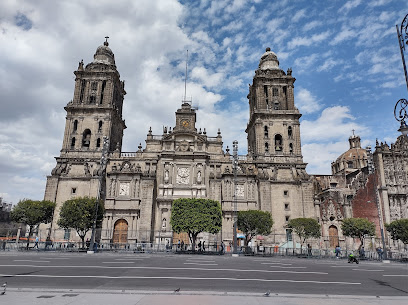
Bosque de Chapultepec
Discover the enchanting Bosque de Chapultepec, a vast urban park in Mexico City offering stunning landscapes, rich history, and cultural attractions.

The Angel of Independence
Discover the majestic Angel of Independence, a cultural landmark in Mexico City symbolizing freedom and history, perfect for tourists exploring the capital.
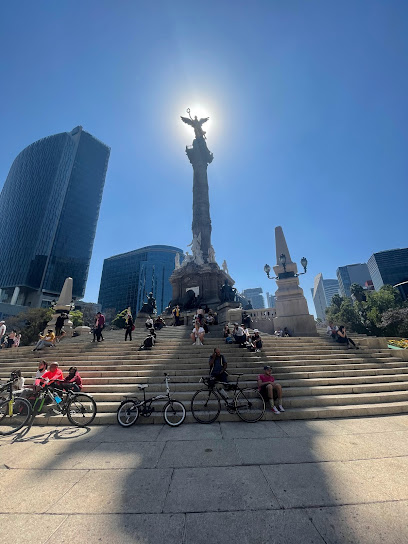
Chapultepec Castle
Uncover the rich history and breathtaking views at Chapultepec Castle, Mexico City's iconic historical landmark and museum set in a lush park.
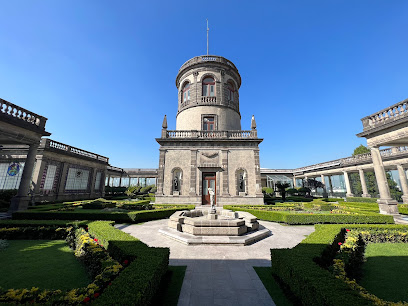
Monument to the Revolution
Explore the Monument to the Revolution, Mexico City's iconic tribute to democracy and resilience, surrounded by vibrant culture and history.
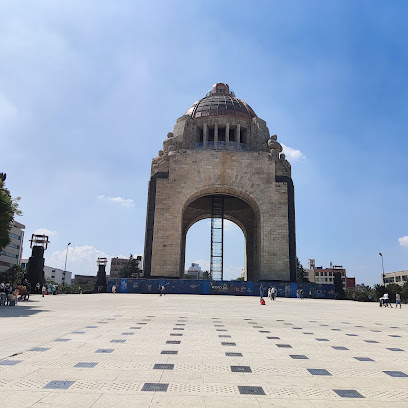
Plaza de la República
Discover the vibrant history and lush beauty of Plaza de la República, a cultural haven in the heart of Mexico City, perfect for relaxation and exploration.
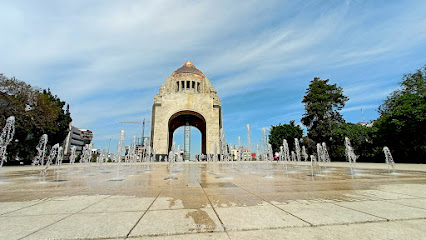
Mirador Torre Latino
Experience breathtaking panoramic views of Mexico City at the iconic Mirador Torre Latino, a landmark that captures the city's rich history and vibrant culture.
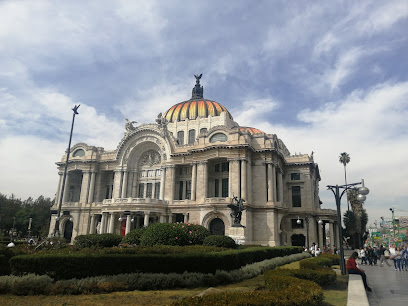
The House of Tiles
Explore the stunning Casa de los Azulejos, a historic landmark in Mexico City, adorned with intricate tiles and rich cultural heritage.
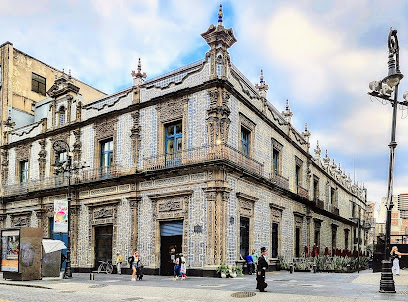
Frida Kahlo Museum
Immerse yourself in the life and art of Frida Kahlo at La Casa Azul, a historical gem in Coyoacán, Mexico City, rich in culture and creativity.
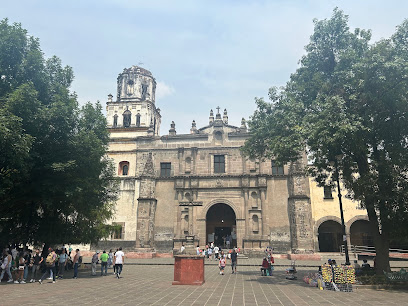
Templo Mayor Museum
Discover the rich heritage of the Aztec civilization at Templo Mayor Museum, an archaeological treasure in the heart of Mexico City.
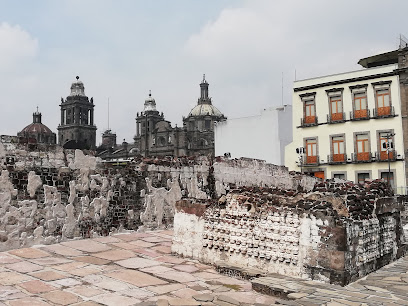
Jardín Hidalgo
Discover the charm of Jardín Hidalgo, a serene park in Coyoacán, Mexico City, featuring beautiful sculptures, lush greenery, and rich cultural heritage.
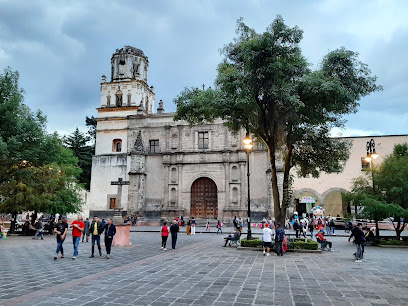
Mexico City Metropolitan Cathedral
Discover the architectural marvel of Mexico City Metropolitan Cathedral, a UNESCO World Heritage Site filled with history, art, and spiritual significance.
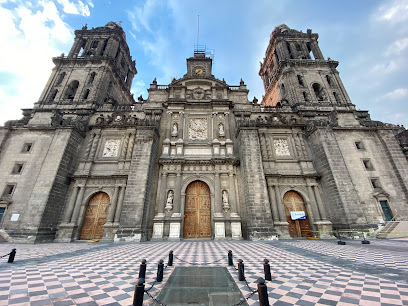
Hemiciclo a Juarez
Discover the Hemiciclo a Juarez, a majestic monument in Mexico City honoring President Benito Juarez and showcasing the city's rich cultural heritage.
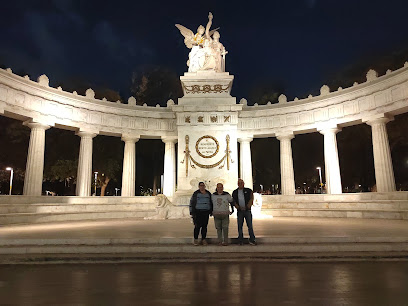
Monumento a la Madre
Explore the Monumento a la Madre, a breathtaking tribute to motherhood in the heart of Mexico City, surrounded by vibrant gardens and local culture.
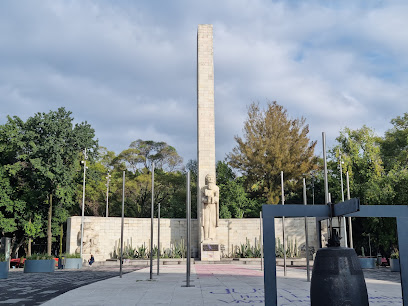
Monument to Cuauhtémoc
Explore the Monument to Cuauhtémoc, a stunning tribute to indigenous heritage and a must-visit tourist attraction in the heart of Mexico City.

Unmissable attractions to see
Bosque de Chapultepec
Explore the vast and beautiful Bosque de Chapultepec, a cultural and natural gem in the heart of Mexico City, perfect for relaxation and discovery.
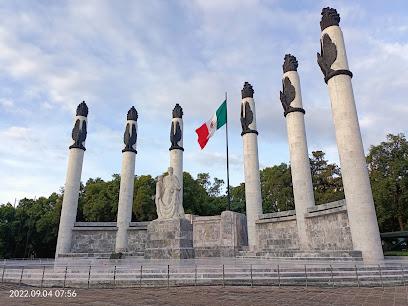
Palacio de Bellas Artes
Discover the architectural beauty and cultural richness of Palacio de Bellas Artes, a must-see artistic gem in the heart of Mexico City.
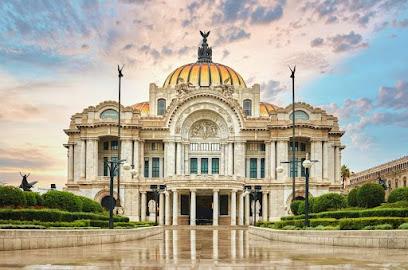
Basilica of Our Lady of Guadalupe
Explore the spiritual heart of Mexico at the Basilica of Our Lady of Guadalupe, a stunning shrine that attracts millions of pilgrims and tourists each year.

Six Flags México
Experience the thrill of Six Flags México, where electrifying rides, captivating shows, and family fun come together in an unforgettable amusement park.
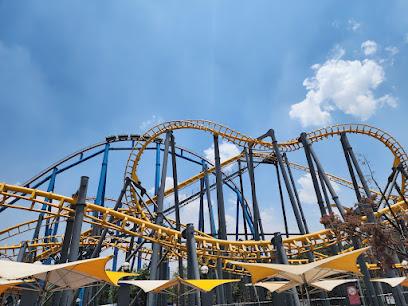
Alameda Central
Discover the beauty and culture of Alameda Central, a historic park in the heart of Mexico City, perfect for relaxation and exploration.
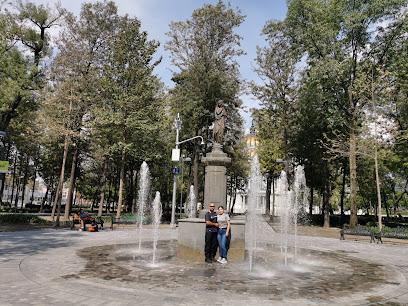
Mercado Sonora
Experience the vibrant Mercado Sonora in Mexico City, a bustling market filled with authentic local goods, delicious food, and rich cultural heritage.
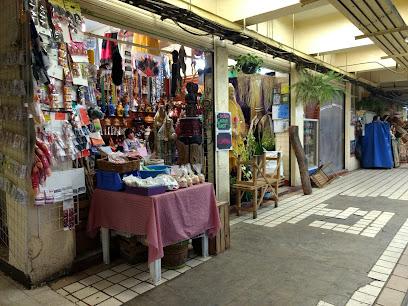
Teotihuacán
Discover the ancient wonders of Teotihuacán, home to the iconic Pyramid of the Sun and rich in Mesoamerican history and culture.
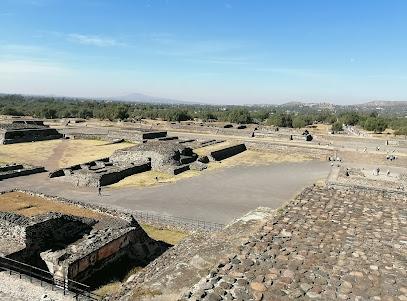
Auditorio Nacional
Discover the architectural brilliance and cultural richness of Auditorio Nacional, Mexico City's premier venue for music and performing arts.
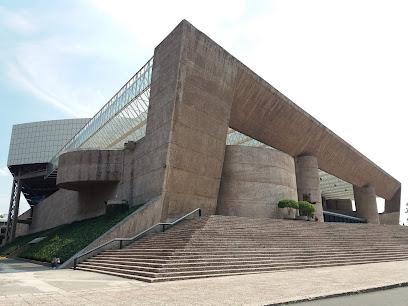
Chapultepec Castle
Discover the rich history and stunning views at Chapultepec Castle, a must-visit landmark in Mexico City’s expansive Chapultepec Park.
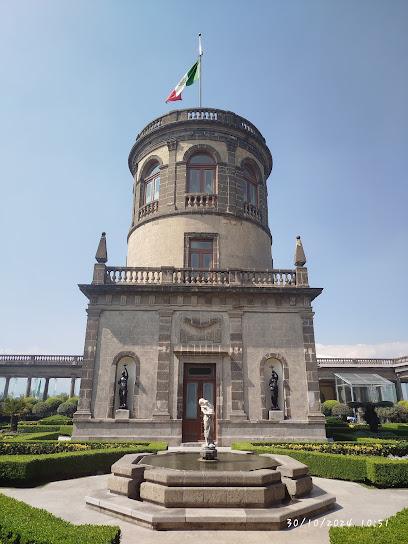
Museo Nacional de Antropología
Uncover the ancient civilizations of Mexico at the Museo Nacional de Antropología, a must-visit for history enthusiasts and cultural explorers.
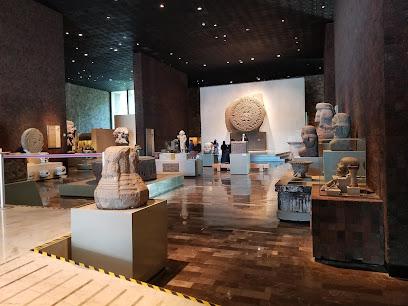
Estadio Azteca
Discover the iconic Estadio Azteca, where football history is made and unforgettable memories are created in the heart of Mexico City.
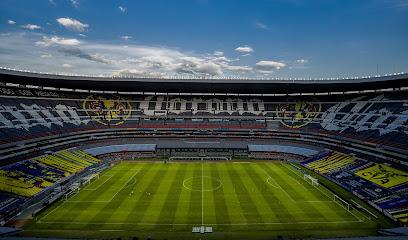
Arena CDMX
Discover the electrifying atmosphere of Arena CDMX, Mexico City's premier venue for concerts, sports, and unforgettable live performances.
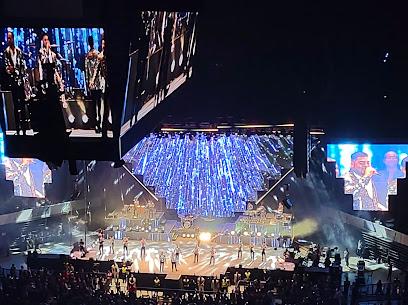
Museo Soumaya
Explore the stunning Museo Soumaya in Mexico City, a cultural gem showcasing a vast collection of art from renowned artists to Mexican heritage.
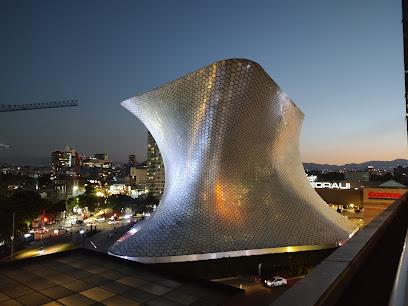
Plaza de la República
Explore the rich history and natural beauty of Plaza de la República, a vibrant city park and historical landmark in the heart of Mexico City.
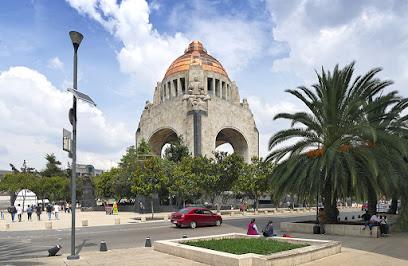
National Film Archives of México
Explore the vibrant heritage of Mexican cinema at the National Film Archives of México, where film history meets contemporary artistry in a stunning setting.
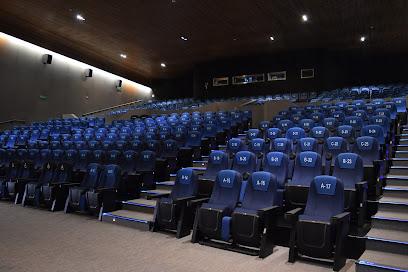
Essential places to dine
Diana Restaurant
Discover authentic Mexican cuisine at Diana Restaurant in Mexico City’s vibrant Reforma Avenue – where tradition meets elegance.
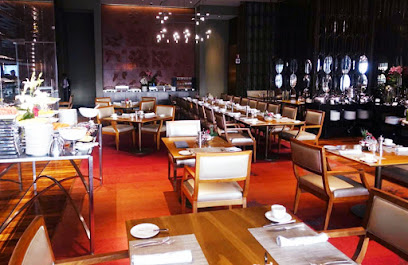
Ling Ling by Hakkasan
Discover exquisite Asian cuisine at Ling Ling by Hakkasan in Mexico City - where culinary art meets breathtaking views.

Contramar
Discover Contramar: A Seafood Paradise in Mexico City's Vibrant Roma Norte Neighborhood.
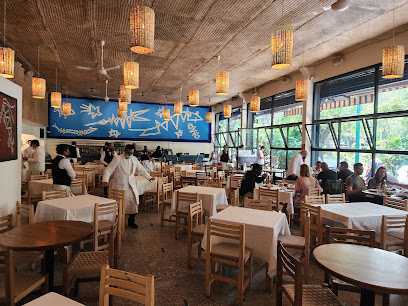
Carmela y Sal
Experience the vibrant flavors of authentic Mexican cuisine at Carmela y Sal, where tradition meets innovation in every dish.

El Cardenal
Experience authentic Mexican flavors at El Cardenal, where every dish tells a story and breakfast becomes an unforgettable feast.
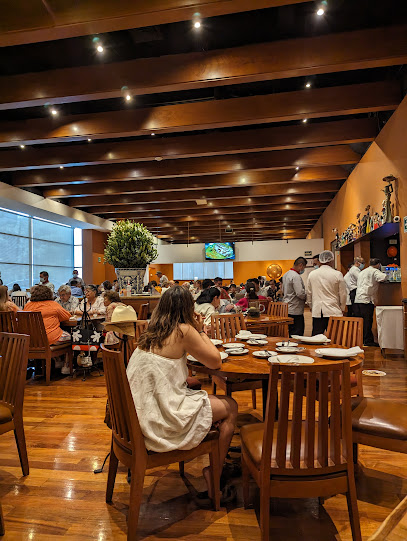
San Ángel Inn
Discover the vibrant flavors of Mexico at San Ángel Inn – where tradition meets elegance in every dish.
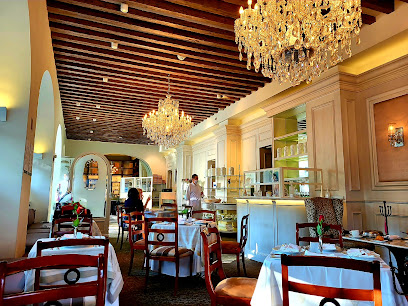
Pujol
Experience the essence of modern Mexican cuisine at Pujol in Polanco—where tradition meets innovation in every exquisite dish.
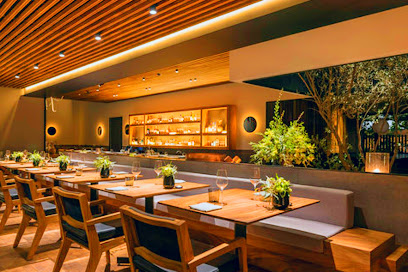
Azul Historico
Experience authentic Mexican flavors in a beautifully designed setting at Azul Historico in Mexico City.
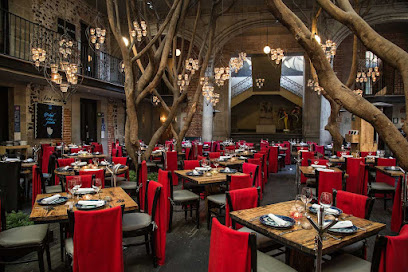
La Distral
Experience contemporary Mexican-Italian cuisine at La Distral in Mexico City—where every dish tells a story.
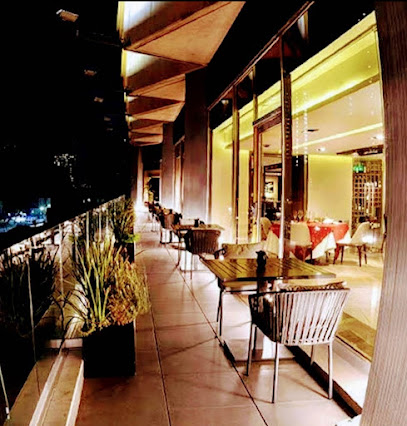
Coox Hanal
Experience authentic Yucatecan cuisine at Coox Hanal, where every dish tells a story rooted in Mexico's rich culinary traditions.
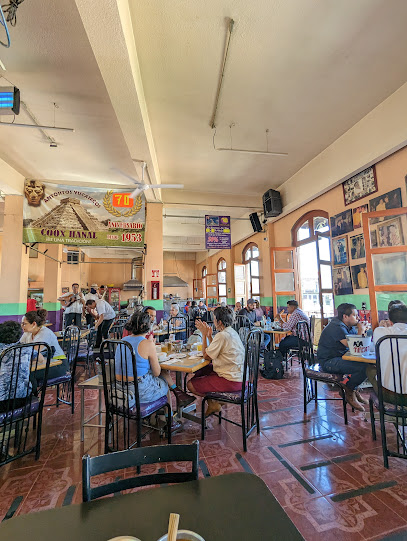
Balcón del Zócalo
Experience authentic Mexican cuisine with breathtaking views at Balcón del Zócalo in Mexico City’s historic center.
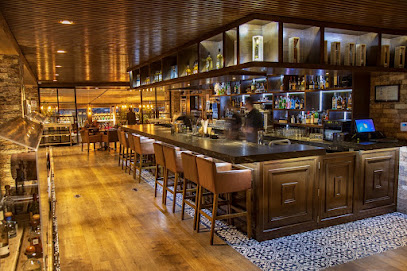
La Buena Barra CDMX
Discover the elegance of La Buena Barra CDMX - where premium steaks meet traditional Mexican cuisine in Polanco.
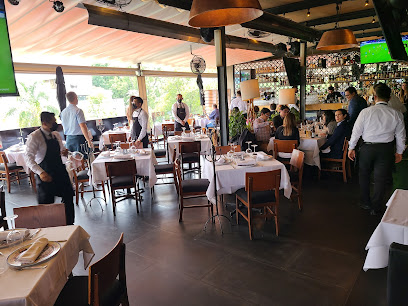
Los Danzantes
Discover Los Danzantes in Coyoacán - where traditional Mexican cuisine meets modern culinary artistry in an unforgettable dining experience.
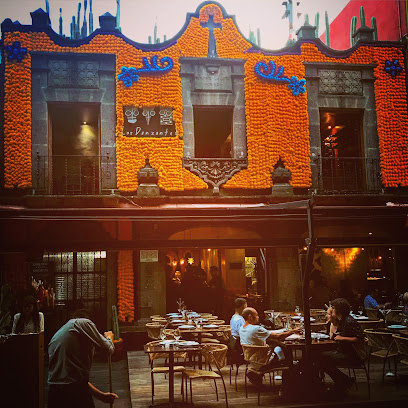
Nicos
Experience authentic Mexican cuisine at Nicos - where traditional flavors meet modern culinary artistry in the heart of Mexico City.
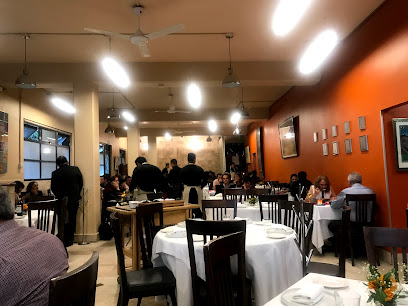
Quintonil
Experience culinary excellence at Quintonil, where traditional Mexican flavors meet innovative gastronomy in a stunning setting.
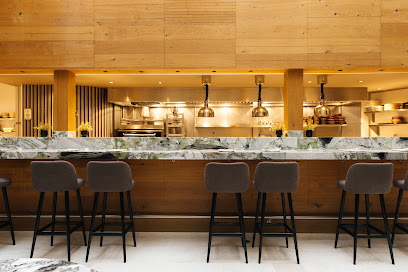
Markets, malls and hidden boutiques
Antara
Discover Antara, an upscale shopping mall in Mexico City featuring luxury brands, diverse dining options, and vibrant entertainment for a memorable visit.

El Palacio de Hierro Centro
Experience luxury shopping in the heart of Mexico City at El Palacio de Hierro Centro, where fashion, gourmet dining, and culture collide.
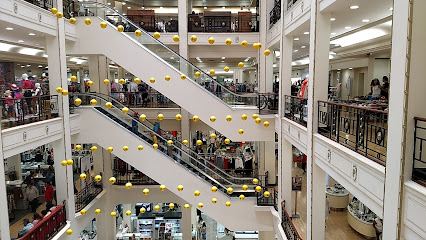
El Nuevo Mundo
Explore El Nuevo Mundo in Mexico City: A vibrant department store offering unique shopping and authentic Mexican dining experiences.
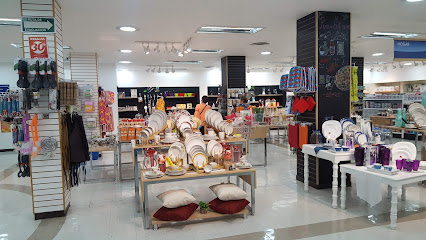
City Shops del Valle
Discover a vibrant shopping experience at City Shops del Valle, where modern retail meets local culture in the heart of Mexico City.

The Shops at Downtown
Discover the perfect blend of shopping, dining, and culture at The Shops at Downtown in the heart of Mexico City.
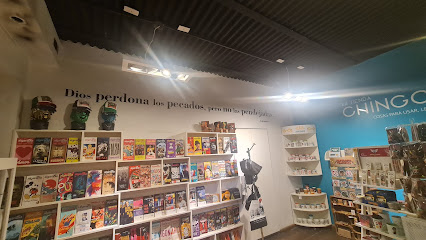
Goodbye Folk Vintage Boutique
Explore Goodbye Folk Vintage Boutique for unique vintage fashion and artisanal footwear in the vibrant Roma Norte district of Mexico City.
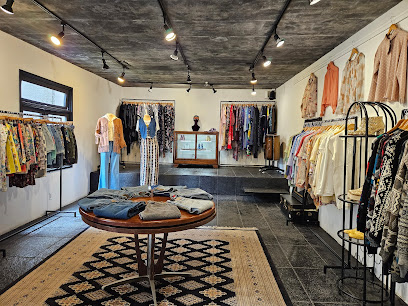
Promoda Outlet
Uncover unbeatable fashion deals at Promoda Outlet in Mexico City, where style meets affordability in a vibrant shopping atmosphere.
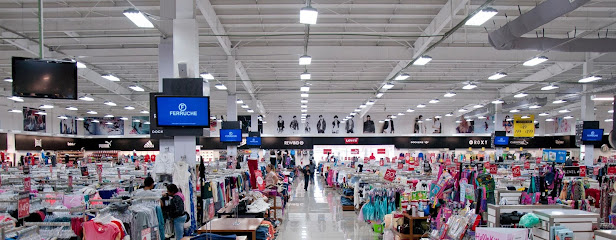
Urban Center Condesa
Discover Urban Center Condesa: A vibrant shopping mall in Mexico City offering exceptional retail, dining, and cultural experiences.

Urban Store Centro Histórico CDMX
Explore the latest fashion trends at Urban Store Centro Histórico, a stylish clothing destination in the heart of Mexico City.
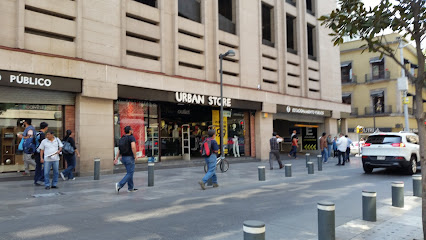
Artisan Square
Immerse yourself in the vibrant arts and crafts of Mexico City at Artisan Square, where unique handicrafts and local artistry await every visitor.
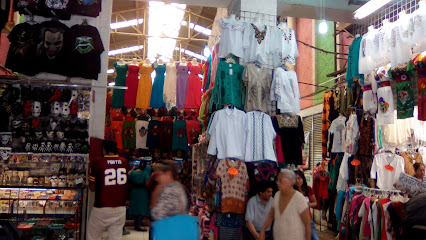
Goodbye Folk Vintage Clothing
Explore a curated selection of vintage clothing and accessories in Mexico City’s trendy Roma Norte neighborhood, celebrating timeless style and individuality.
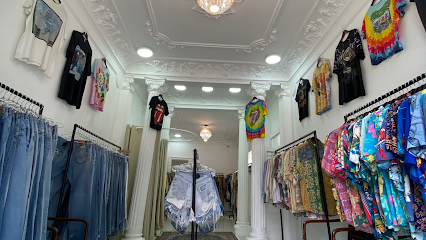
Vintrend Shop
Explore Vintrend Shop in Juárez, Mexico City - where trendy women's fashion meets exceptional style and quality.
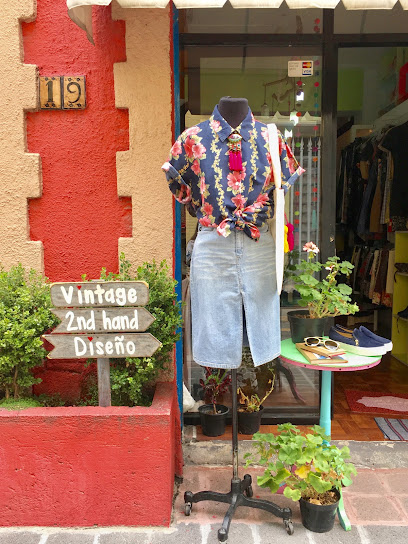
goodbye folk vintage tshirt gallery and more
Discover unique vintage t-shirts and more at Goodbye Folk in Roma Norte, where nostalgia meets style in Mexico City.
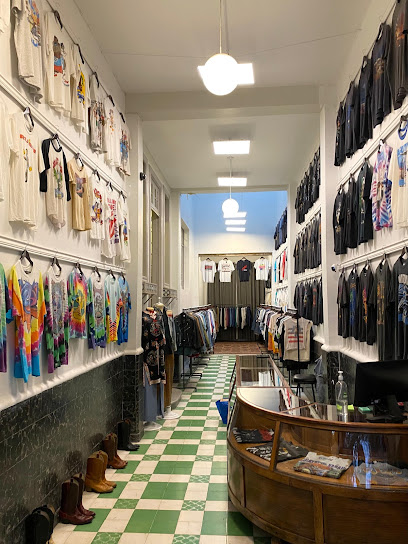
Pingüino México (Roma)
Explore Pingüino México for authentic Mexican handicrafts and art in the heart of Roma Norte, a must-visit for any traveler.
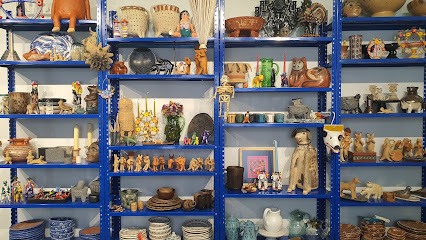
Poema Space
Explore Poema Space in Roma Norte, where unique, handcrafted gifts and local artistry come together to create unforgettable souvenirs from Mexico City.
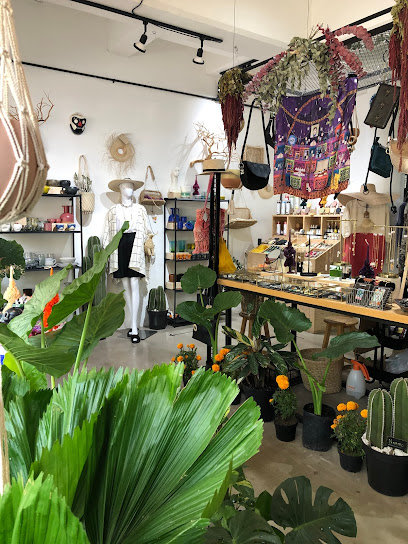
Essential bars & hidden hideouts
Bar Pata Negra
Discover the vibrant flavors and lively atmosphere of Bar Pata Negra in Mexico City's historic center, where culinary delights meet nightlife excitement.

Licorería Limantour
Discover the vibrant cocktail culture of Mexico City at Licorería Limantour, where innovative drinks and a lively atmosphere await.
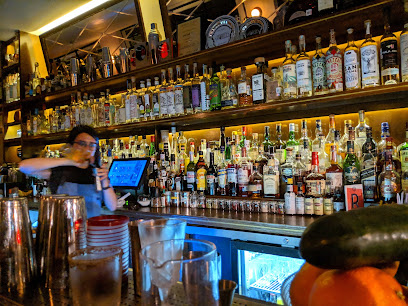
GinGin
Experience innovative cocktails and vibrant nightlife at GinGin, a premier cocktail bar in the heart of Roma Norte, Mexico City.
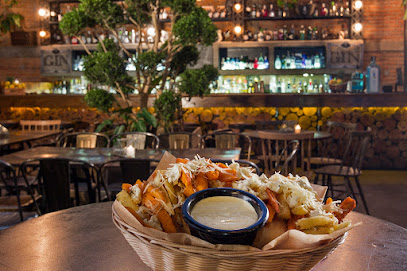
Balmori Roofbar
Discover the vibrant flavors of Mexico City at Balmori Roofbar, where exquisite grilled dishes meet breathtaking rooftop views.
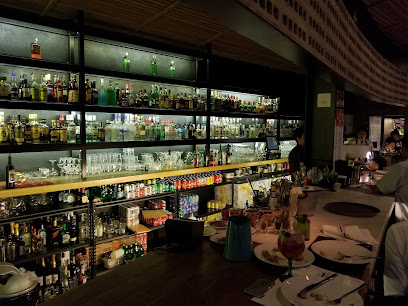
Tlachiquero Mezcal
Discover the authentic flavors of mezcal at Tlachiquero Mezcal, a vibrant bar in the heart of Mexico City’s Roma Norte district.
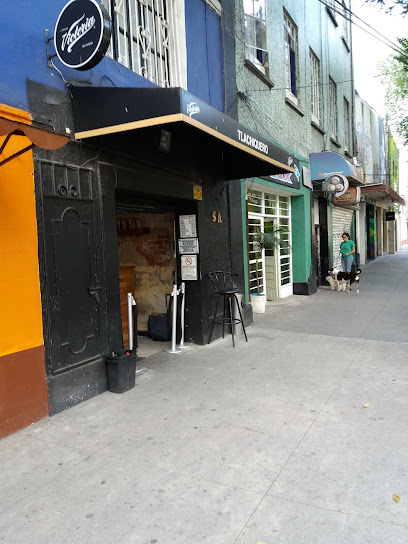
Hanky Panky Cocktail Bar
Explore Hanky Panky Cocktail Bar for innovative cocktails and a stylish ambiance in the heart of Mexico City's Juárez neighborhood.
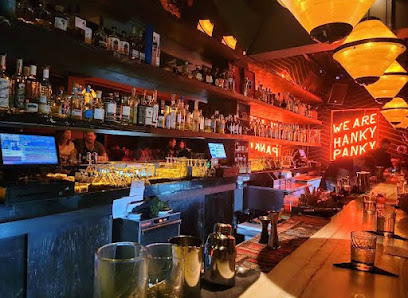
La Clandestina
Explore La Clandestina, the vibrant mezcal bar in La Condesa, Mexico City, known for its unique cocktails and lively atmosphere.
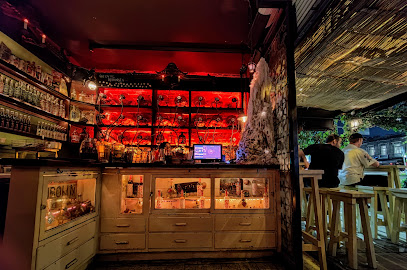
Xaman Bar
Experience the vibrant nightlife of Mexico City at Xaman Bar, offering innovative cocktails and a stylish atmosphere for unforgettable evenings.
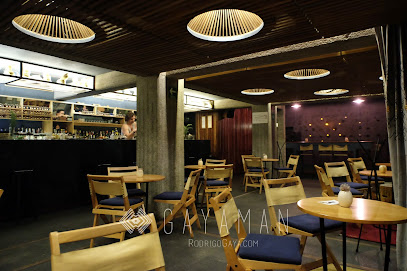
Baltra Bar
Experience the vibrant nightlife of Mexico City at Baltra Bar, where innovative cocktails and a chic atmosphere await you.

Bar La Gioconda
Experience the vibrant nightlife of Mexico City at Bar La Gioconda, where great cocktails meet local culture in a cozy bar setting.
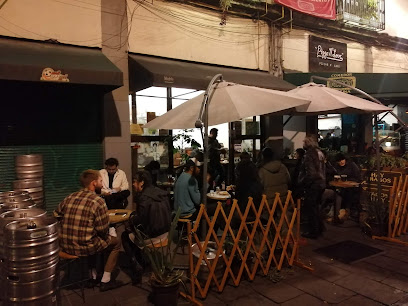
Handshake Speakeasy
Uncover the hidden gem of Handshake Speakeasy, where exquisite cocktails and an enchanting atmosphere await in Mexico City.
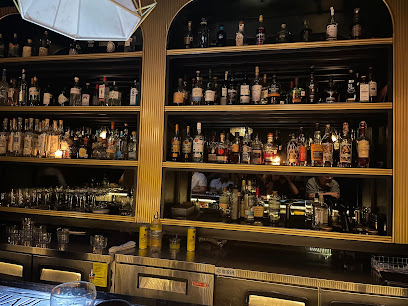
Fifty Mils
Experience the vibrant flavors and exquisite cocktails at Fifty Mils, a premier cocktail bar and restaurant in the heart of Mexico City.
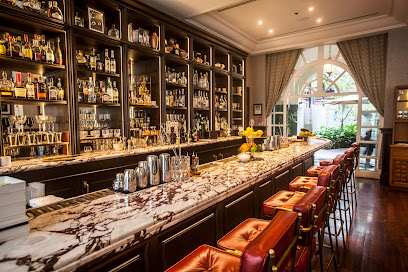
Mexicano - Bar
Discover the essence of Mexican cuisine and vibrant nightlife at Mexicano - Bar, located in the historic heart of Mexico City.
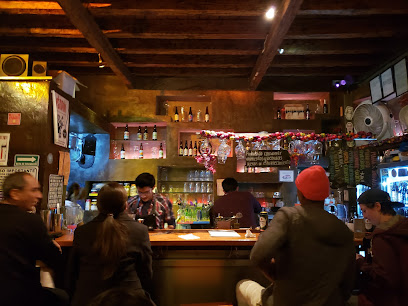
Maison Artemisia
Discover Maison Artemisia, where exquisite cocktails meet a vibrant atmosphere in the heart of Mexico City's Roma Norte.
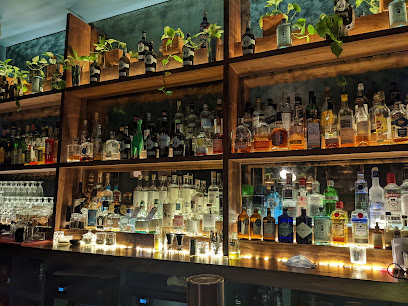
Ladina Bar
Experience the lively atmosphere and innovative cocktails at Ladina Bar in Roma Norte, the heart of Mexico City's nightlife.
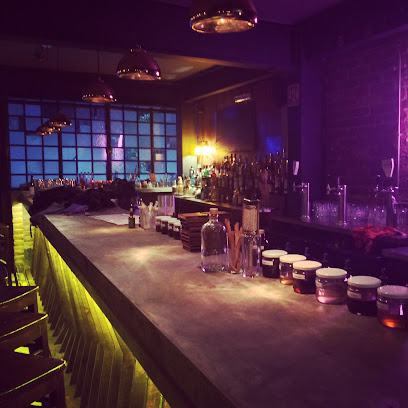
Local Phrases
-
- HelloHola
[oh-lah] - GoodbyeAdiós
[ah-dee-ohs] - YesSí
[see] - NoNo
[noh] - Please/You're welcomePor favor/De nada
[por fah-vor/de nah-dah] - Thank youGracias
[grah-syahs] - Excuse me/SorryPerdón/Lo siento
[pair-dohn/loh see-en-toh] - How are you?¿Cómo estás?
[koh-moh ehs-tahs] - Fine. And you?Bien. ¿Y tú?
[byen. ee too] - Do you speak English?¿Hablas inglés?
[ah-blahs een-glehs] - I don't understandNo entiendo
[noh ehn-tee-ehn-doh]
- HelloHola
-
- I'd like to see the menu, pleaseMe gustaría ver el menú, por favor
[meh goo-stah-ree-ah ver el meh-noo, por fah-vor] - I don't eat meatNo como carne
[noh koh-moh kahr-neh] - Cheers!¡Salud!
[sah-loohd] - I would like to pay, pleaseMe gustaría pagar, por favor
[meh goo-stah-ree-ah pah-gar, por fah-vor]
- I'd like to see the menu, pleaseMe gustaría ver el menú, por favor
-
- Help!¡Ayuda!
[ah-yoo-dah] - Go away!¡Aléjate!
[ah-leh-hah-teh] - Call the Police!¡Llama a la policía!
[yah-mah ah lah poh-lee-see-ah] - Call a doctor!¡Llama a un médico!
[yah-mah ah oon meh-dee-koh] - I'm lostEstoy perdido
[ehs-toy pair-dee-doh] - I'm illEstoy enfermo
[ehs-toy ehn-fehr-moh]
- Help!¡Ayuda!
-
- I'd like to buy...Me gustaría comprar...
[meh goo-stah-ree-ah kohm-prahr] - I'm just lookingSólo estoy viendo
[soh-loh ehs-toy vee-ehn-doh] - How much is it?¿Cuánto cuesta?
[kwan-toh kwehs-tah] - That's too expensiveEso es muy caro
[eh-soh ehs mwee kah-roh] - Can you lower the price?¿Puedes bajar el precio?
[pweh-dehs bah-har el pree-syoh]
- I'd like to buy...Me gustaría comprar...
-
- What time is it?¿Qué hora es?
[keh oh-rah ehs] - It's one o'clockEs la una
[ehs lah oo-nah] - Half past (10)Las diez y media
[lahs dee-ehs ee meh-dee-ah] - MorningMañana
[mah-nyah-nah] - AfternoonTarde
[tahr-deh] - EveningNoche
[noh-cheh] - YesterdayAyer
[ah-yehr] - TodayHoy
[oy] - TomorrowMañana
[mah-nyah-nah] - 1Uno
[oo-noh] - 2Dos
[dohs] - 3Tres
[trehs] - 4Cuatro
[kwah-troh] - 5Cinco
[seen-koh] - 6Seis
[says] - 7Siete
[see-eh-teh] - 8Ocho
[oh-choh] - 9Nueve
[nweh-veh] - 10Diez
[dee-ehs]
- What time is it?¿Qué hora es?
-
- Where's a/the...?¿Dónde está el/la...?
[dohn-deh ehs-tah ehl/lah] - What's the address?¿Cuál es la dirección?
[kwal ehs lah dee-rehk-syohn] - Can you show me (on the map)?¿Puedes mostrarme (en el mapa)?
[pweh-dehs mohs-trar-meh (ehn el mah-pah)] - When's the next (bus)?¿Cuándo es el próximo (autobús)?
[kwan-doh ehs ehl prohk-see-moh (ow-toh-boos)] - A ticket (to ....)Un boleto (a ....)
[oon boh-leh-toh (ah)]
- Where's a/the...?¿Dónde está el/la...?
History of Mexico City
-
In 1325, the Mexica people founded the city of Tenochtitlán on an island in the middle of Lake Texcoco. According to legend, the location was chosen when the Mexica saw an eagle perched on a cactus, devouring a snake. This event is now immortalized on the Mexican flag. Tenochtitlán grew rapidly and became the capital of the Aztec Empire, known for its intricate canal system, impressive temples, and bustling markets.
-
In 1519, Spanish conquistador Hernán Cortés arrived in the Aztec Empire. By 1521, after a series of battles and alliances with rival indigenous groups, Cortés and his forces captured Tenochtitlán. The city was subsequently razed and rebuilt in the Spanish colonial style, marking the beginning of Mexico City as a hub for Spanish colonial administration.
-
Under Spanish rule, Mexico City became a major center of commerce, religion, and government in New Spain. The city was adorned with baroque churches, palatial residences, and grand public squares such as the Plaza Mayor, now known as Zócalo. Colonial architecture from this period, including the Metropolitan Cathedral and the National Palace, still stands today as a testament to this era.
-
The Mexican War of Independence, which began in 1810 under the leadership of figures like Miguel Hidalgo and José María Morelos, culminated in the capture of Mexico City by insurgent forces in 1821. This event marked the end of Spanish rule and the beginning of Mexico's journey as an independent nation. The city's role as the national capital was cemented during this turbulent period.
-
The early 20th century saw Mexico embroiled in a decade-long revolution that began in 1910. Mexico City was a focal point for revolutionary activity and political change. Leaders like Francisco Madero, Emiliano Zapata, and Pancho Villa played key roles in the events that led to the establishment of a new constitutional government in 1917. The city witnessed significant social and economic transformations during and after the revolution.
-
The mid-20th century was a period of significant modernization and rapid growth for Mexico City. The city expanded extensively, incorporating surrounding towns and rural areas. Major infrastructure projects, such as the construction of the Metro system in 1969, aimed to address the challenges of urban sprawl and population growth. Mexico City also hosted the 1968 Summer Olympics, which brought international attention and further development.
-
Mexico City has long been a cultural powerhouse, but the late 20th and early 21st centuries saw a resurgence of artistic and cultural activity. The city became renowned for its vibrant arts scene, with numerous museums, galleries, and performance venues. Institutions like the National Museum of Anthropology and the Palacio de Bellas Artes highlight the city's rich cultural heritage and contemporary creativity.
-
Mexico City has experienced devastating earthquakes, notably in 1985 and 2017. The 1985 earthquake caused extensive damage and loss of life, prompting significant changes in building codes and emergency response strategies. The city's resilience and solidarity in the face of natural disasters have been a defining aspect of its character, with communities coming together to rebuild and support one another in times of crisis.
Mexico City Essentials
-
Mexico City is served by Benito Juárez International Airport (MEX), which is the primary gateway for international and domestic flights. The airport is well-connected to major cities around the world. From the airport, you can reach the city center via taxi, authorized airport shuttles, or the Metro (Line 5 connects to Pantitlán station, where you can transfer to other lines).
-
Mexico City offers various modes of transportation, including the Metro, buses, and taxis. The Metro is an efficient and affordable way to navigate the city, with 12 lines covering extensive areas. Buses, including the Metrobus and RTP network, are also widely available. Taxis can be hailed on the street or booked through apps like Uber, Didi, and Cabify. For short distances, eco-friendly options like Ecobici bike-sharing are popular.
-
The official currency in Mexico is the Mexican Peso (MXN). Credit and debit cards are widely accepted in hotels, restaurants, and shops, but it's advisable to carry some cash for smaller establishments and markets. ATMs are plentiful throughout the city, but be cautious when withdrawing money. Notify your bank of your travel plans to avoid any issues with card transactions.
-
While Mexico City is generally safe for tourists, it's important to stay vigilant. Avoid walking alone at night, especially in areas like Tepito, Doctores, and parts of Iztapalapa, which have higher crime rates. Stick to well-lit and populated areas. Keep an eye on your belongings in crowded places and use authorized taxis or ride-sharing services. Always be aware of your surroundings and avoid displaying valuables.
-
In case of emergency, dial 911 for immediate assistance. Mexico City has well-equipped hospitals and clinics. It is advisable to have travel insurance that covers medical emergencies. For minor health issues, numerous pharmacies are available throughout the city. Keep a list of emergency contacts and the address of your embassy or consulate.
-
Fashion: Do dress comfortably and appropriately for the weather. Avoid wearing flashy jewelry or expensive items. Religion: Do respect religious sites by dressing modestly and behaving respectfully. Public Transport: Do be mindful of your belongings and give up your seat to elderly or disabled passengers. Don't eat or drink on the Metro. Greetings: Do greet people with a handshake or a friendly 'Hola.' Eating & Drinking: Do try local foods and street vendors, but ensure they have good hygiene practices. Don't drink tap water; always opt for bottled water.
-
To experience Mexico City like a local, explore its vibrant neighborhoods such as Condesa, Roma, and Coyoacán. Visit local markets like Mercado de la Merced for fresh produce and unique finds. Try traditional dishes at fondas (small local eateries) and enjoy street food like tacos and tamales. Attend cultural events, such as Lucha Libre wrestling matches or performances at Palacio de Bellas Artes. Engage with locals to learn more about the city's rich history and culture.
Trending Landmark in Mexico City
-
Plaza de la Constitución
-
Bosque de Chapultepec
-
The Angel of Independence
-
Chapultepec Castle
-
Monument to the Revolution
-
Plaza de la República
-
Mirador Torre Latino
-
The House of Tiles
-
Frida Kahlo Museum
-
Templo Mayor Museum
-
Jardín Hidalgo
-
Mexico City Metropolitan Cathedral
-
Hemiciclo a Juarez
-
Monumento a la Madre
-
Monument to Cuauhtémoc
Nearby Cities to Mexico City
-
Things To Do in Puebla
-
Things To Do in Taxco
-
Things To Do in Queretaro
-
Things To Do in San Miguel de Allende
-
Things To Do in Guanajuato
-
Things To Do in Acapulco
-
Things To Do in Veracruz
-
Things To Do in Oaxaca
-
Things To Do in Puerto Escondido
-
Things To Do in Guadalajara
-
Things To Do in Ixtapa-Zihuatanejo
-
Things To Do in Puerto Vallarta
-
Things To Do in Chiapas
-
Things To Do in Monterrey
-
Things To Do in Matamoros



















